Selecting the right Yamaha outboard motor is crucial to maximizing your boating experience, balancing power with efficiency, and ensuring reliability on the open water. Yamaha outboards are recognized for their technological innovation and range of options suitable for any mariner's needs.
This guide will help you navigate Yamaha's offerings to find the best match for your boat and boating style. From understanding the necessary horsepower for your vessel's size and weight to choosing between single or multiple engines, we'll cover the key considerations that affect your decision. Equip yourself with the knowledge to select an engine that enhances performance and adds value to every journey across the water.
The Yamaha Advantage
Yamaha is renowned globally for its robust lineup of products and for leading the marine industry with its advanced outboard engines. When you choose Yamaha, you're selecting a powerhouse of innovation and reliability designed to maximize your time on the water. Whether planning to cruise through open waters, fish in distant bays, or enjoy high-speed aquatic sports, having the right Yamaha outboard engine is crucial. Choosing Yamaha ensures optimal performance, superior efficiency, and enduring satisfaction with every expedition. Yamaha’s commitment to quality ensures that your outboard engine is not just a motor but a crucial component of your boat's overall performance, enhancing every aspect of your boating experience.
How to Match Your Boat with the Perfect Engine Size
Size and Weight: How Much Power Do You Need?
Selecting the correct engine size for your boat begins with understanding how its dimensions and mass affect power needs:
- Boat Size: Larger boats require more horsepower to move through water efficiently. Insufficient power can lead to sluggish performance and higher fuel consumption.
- Boat Weight: A heavier boat demands more horsepower for effective propulsion and maneuverability. An engine that's too weak for the boat's weight will strain under the load, reducing efficiency and potentially increasing maintenance issues.
Calculating the Necessary Horsepower
To determine the right amount of horsepower for your boat, consider the following:
- Boat Length: Generally, the longer the boat, the more horsepower is needed. You can start with a basic rule of thumb, such as providing at least two to three horsepower for every foot of boat length.
- Intended Use: The purpose of the boat also influences horsepower needs. For instance:
- Leisure Cruising: Might require less horsepower compared to high-speed boating.
- Water Sports: Needs higher horsepower for quick starts and sustained speed.
- Fishing: Especially in deeper waters, might benefit from moderate to high horsepower to handle varying conditions and maintain stability.
- Sailing Support: If your outboard is a backup for a sailboat, compactness and reliability matter. Opt for models that guarantee easy starts and consistent operation.
This framework helps ensure that your engine’s power is tailored to your boat's physical requirements and specific usage needs, optimizing performance and fuel efficiency.
Choosing Between Single or Multiple Engines
Selecting the correct engine setup—single or multiple—can significantly influence your boat's performance, handling, and safety. Here's a detailed look at the pros and cons of each setup, along with scenarios where multiple engines might be the better choice:
- Advantages of a Single Yamaha Outboard Engine:
- Cost-Effectiveness: Generally, single engines are less expensive to purchase and maintain.
- Simplicity: Fewer components mean more manageable maintenance and a lower likelihood of mechanical failures.
- Efficiency: A single-engine can be more fuel-efficient in lighter boats and those used primarily for cruising at moderate speeds.
- Advantages of Multiple Engines:
- Increased Power and Speed: More engines mean more thrust and faster acceleration, ideal for larger boats and high-speed activities.
- Redundancy: With multiple engines, if one fails, the other can still operate, increasing safety during offshore trips.
- Improved Handling: Multiple engines offer better control and maneuverability, particularly in adverse conditions.
- Scenarios Favoring Multiple Engines:
- Offshore Fishing: Provides the power and reliability needed for long distances and rough waters.
- Large Vessels: Helps manage the increased load and maintain better balance and control.
Planning Your Budget: More Than Just the Purchase Price
When investing in a Yamaha outboard, it's crucial to consider both the immediate and long-term financial implications. This section breaks down the costs of purchasing and owning an outboard engine.
Upfront Costs: What Can You Expect?
The initial purchase price of an outboard engine can vary significantly based on horsepower, technology, and additional features:
- Horsepower Ranges: Higher horsepower engines generally cost more due to the increased materials and technology required for higher performance.
- Features: Advanced features can add to the cost but improve the boating experience.
The Bigger Picture: Long-Term Yamaha Outboard Ownership Costs
Beyond the purchase price, several factors contribute to the total cost of ownership of your Yamaha outboard:
- Maintenance: Regular servicing, Yamaha outboard parts replacement, and repairs can vary by engine type and usage.
- Fuel Efficiency: Engines with better fuel efficiency can significantly reduce operational costs over time.
- Resale Value: Yamaha outboards are known for holding their value well, but higher initial quality and regular maintenance can enhance resale potential.
Enhancing Your Boating Experience
Optimizing your boating experience extends beyond engine power to include crucial setup details like shaft length. Here's why ensuring a correct match between your engine’s shaft length and your boat’s transom height is essential:
- Efficient Propulsion: Proper shaft length alignment ensures optimal water displacement and propulsion efficiency.
- Avoiding Performance Issues: A mismatch can lead to poor handling, increased drag, and potentially damage both the engine and the boat.
- Improving Handling: Correct shaft length enhances overall performance, making navigation and control smoother and more responsive.
- Ensuring Longevity: Proper fit prevents undue stress on your boat’s structure and the outboard.
Understanding Yamaha Outboard Model Codes
Early Models - Yamaha Outboard Model Codes
- V Model Description:
- B - Inshore Series
- C - C Series
- D - Twin Propellers
- E - Enduro Series
- F - Four-Stroke
- L - Counter Rotation
- P - Pro Series
- S - Saltwater Series
- T - High Thrust
- V - V MAX® Series
- X - Extreme Thrust Offshore
- Z - HPDI
- X Fuel Induction:
- F - Four Stroke
- X - OX66 Advanced Fuel Injection
- Z - HPDI (High Pressure Direct Injection)
- 150 Prop Shaft Horsepower:
- Displays the horsepower rating, with numbers such as 6, 9.9, 90, 150, 250, 300 indicating the power output.
- T Starting/Tilt Method:
- Blank - Power Trim and Tilt (PTT) & Electric Start
- T - Power Trim and Tilt
- P - Power Tilt with Electric Start
- E - Manual Tilt with Electric Start
- M - Manual Tilt with Manual Start
- L Shaft Length:
- S - 15 inches
- L - 20 inches
- X - 25 inches
- U - 30 inches
- J - Jet Drive Unit
- R Control Method:
- R - Remote Control
- H - Tiller Handle
- B New Model Designator:
- Any letter appearing between Prop Shaft Horsepower and Starting/Tilt Method is a "New Model Designator,” which designates enhancement(s) to an existing outboard model sufficient to deem it a new mode or a completely new outboard that is a direct replacement of an existing outboard model.
- Example:
- VZ300BTLR
- F9.9FMSH
- F15CPLH
- F40BTLR
- D Model Year (Before April 1, 2005):
- The last letter in the model code historically indicated the model year, with each letter representing a specific year:
- D - 2005
- C - 2004
- B - 2003
- A - 2002
- Z - 2001
- Y - 2000
- X - 1999
- W - 1998
- V - 1997
- U - 1996
- T - 1995
- S - 1994
- R - 1993
- Q - 1992
- P - 1991
New Models - Yamaha Outboard Model Codes
- F Fuel Induction/Engine Type:
- F - Four Stroke
- LF - Four Stroke (Counter Rotation)
- VF - V MAX SHO® Four Stroke
- T - High Thrust Four Stroke
- XF - Extreme Thrust Offshore Four-Stroke
- 25 Horsepower:
- Indicates the range of horsepower from 2.5hp to 425hp.
- L Shaft Length:
- S - 15 inches
- L - 20 inches
- X - 25 inches
- U - 30 inches
- E - 35 inches
- J - Jet
- N - No lower unit (LSC Models)
- W Starting Method & Tilt Method:
- Blank - Power Trim and Tilt (PTT) & Electric start
- P - Power Tilt and Electric Start Only
- E - Electric Start Only
- M - Manual Start Only
- T - Power Trim and Tilt (PTT)
- W - Electric & Manual Start
- H Control Method:
- Blank - Remote Control
- H - Tiller Handle
- C - Command Link® Control (Digital)
- S - Integrated Electric Power Steering (Digital)
- C Generation:
- Indicates the generation or revision of the motor, with letters representing successive updates (e.g., A = 1st change, B = 2nd change, etc.)
- 2 Color:
- Blank - Standard Gray
- 2 - White
- 3 - Matte Brown
- 7 - Unpainted Cowling Sections
Final Thoughts: Navigating Your Yamaha Outboard Engine Selection
Selecting the perfect Yamaha outboard engine for your boat is about striking the right balance between power, efficiency, and usability. By considering factors such as your boat's size and weight, the horsepower requirements for your activities, and whether you should opt for single or multiple engines, you can ensure your Yamaha outboard will deliver the performance you need. It’s also crucial to think about your budget not just in terms of initial purchase cost but also regarding long-term maintenance and fuel efficiency.
The ideal engine enhances your boating experience, ensuring reliability and safety on the water, whether cruising, fishing, or enjoying water sports. To make the most informed decision, seek advice from a Yamaha dealer or marine engine expert who can provide insights tailored to your situation. With the right Yamaha outboard, you'll enjoy every moment on the water more effectively and more enjoyably.



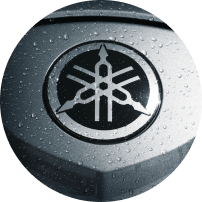
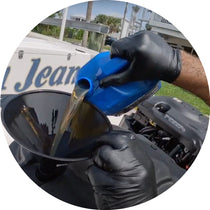
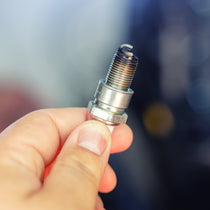
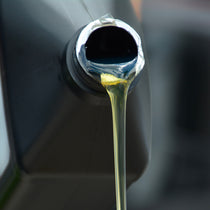

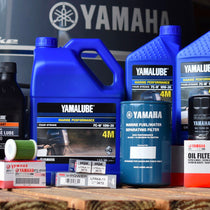
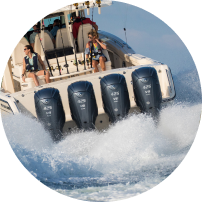

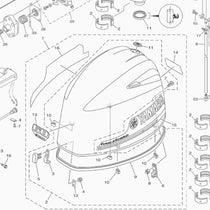











1 comment
My engine is a LF225TURA. What are the specifics on this engine? It was not clear from the above discussion.
Thanks
———
PartsVu replied:
Hi Gary,
Thank you for your question! The LF225TURA is a 2002 Yamaha Four Stroke outboard, with a V6 3.3L engine. It’s a counter-rotation model, which means it’s designed for use on the left side of a twin-engine setup. If you have any additional questions or concerns, feel free to reach out. I’m happy to help!
Best regards, Markine D